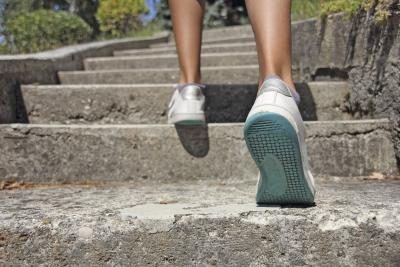You’ve waited months to meet your new baby and your body seems to be stalling. The end of pregnancy is the hardest part and the last week or two can feel like an eternity. Labor can begin on its own any time after the 38th week. This is also the safest time for your baby to be born. If things haven’t started on their own after that, you may want to try some exercises to help you in labor. Keep in mind that babies come when they are ready and always ask your doctor if you are fit enough for exercise. Read on for more information on how to speed things up a bit.
8 Best Exercises to Induce Labor Naturally
Some exercises can be done all through your pregnancy to help widen your pelvis naturally and increase your comfort carrying your baby. They also help you early on to prepare for labor. Take a look at these exercises for labor induction and when it is okay to do them:
Exercises Safe All During Pregnancy
With your doctor’s permission, you should do these exercises which don’t actually start labor but prepare your body during your pregnancy:
- Walking

Walking all throughout pregnancy is very good for your health and your baby. If your doctor gives the permission, you can walk every day to get exercise and help prepare your body for labor. In the later stages of pregnancy, it helps your baby to drop deep into the pelvis and get the cervical dilation started.
- Kegel
 s
s
Kegel exercises can be done all through your pregnancy to help keep your pelvic floor toned. They help relieve any urine leakage that may occur and get your muscles ready for labor and delivery. At the end of your pregnancy, Kegels can contract the muscles used in labor and help move things along. Toned pelvic floor muscles also make for an easier delivery.
To do this exercise, you just sit on the toilet and start and stop the flow of your urine. Once you get good at it, you can do it anywhere at any time. Just draw up and relax the muscles in your pelvic floor.
- S
 wimming
wimming
As long as your doc says it’s okay, swimming can help prepare you for labor all through your pregnancy. You can swim every day up until you actually go into labor and this exercise helps tone the entire body and prepare it for the physical work ahead. Swimming close to labor can especially stimulate the muscles in the lower half of the body.
- Pelvic Rock

Pelvic tilts are very helpful in later pregnant to help relieve the weight of the baby off your back. They are also one of the best exercises to induce labor naturally. Get down on the floor on all fours. Arch your back up and tilt your pelvis down, like a mad cat. Then relax and allow your belly to drop back down. Continue as in a rocking motion up and down 10 to 15 times.
Exercises Close to Your Due Date
These exercises work well in the last few weeks of pregnancy to help move things along faster. Try these exercises for inducing labor naturally:
- Squats

Squats are pretty effective when it comes to starting your labor. It opens up the pelvis and allows your baby to drop into your pelvis. Once the baby’s head is firmly against your cervix, chemicals are released that can start contractions. Just make sure you do this in the comfort of your home and squat down until you can feel a slight burning feeling deep in your abdomen. Make sure you hang on to a sturdy piece of furniture or support yourself with an exercise ball.
- Climbing Stairs

Climbing stairs during the last few weeks of pregnancy can help with some cardio readiness and help the baby drop. Gravity from stair climbing can open the pelvis and bring the baby’s head down onto your cervix, which helps it “ripen” and get ready to dilate. Pressure from the baby’s head can help start contractions by releasing chemicals from the inside of your cervix. Just use caution, use the handrails, and take your time going up and down.
- Lunges

Lunges can help to rotate your baby and widen your hips. This helps the baby drop down and can help naturally bring on labor. Just stand with your feet a shoulder width apart, step forward and bend the knee. Keep your back and shoulders straight as you do this. Make sure you are holding on to a partner or sturdy piece of furniture that is next to you so you don’t lose your balance.
- The Tailor Sit
Tailor sitting involves sitting on the floor with your knees bent and feet flat together. It can help spread the pelvis, stretch your muscles in your pelvis, thi ghs and your back, and helps with blood flow. As you sit with your feet together, allow your knees to drop to the ground and stretch your inner
ghs and your back, and helps with blood flow. As you sit with your feet together, allow your knees to drop to the ground and stretch your inner
thighs. Pull your knees back up and let them drop again in a “butterfly” fashion. You can do this 5 to 10 times.
The following video shows 3 exercises to induce labor such as using a birthing ball:
Other Ways to Induce Labor Naturally
Exercises for inducing labor are a great way to prepare your body for birth. After your 39th week, there are a few tricks some people try including:
- Stimulate the nipples. Stimulating the nipples can trigger your body to release oxytocin. This is the chemical your body sends out to make the uterus contract. This is meant for when you are breastfeeding your new baby, it helps the uterus clamp down and shrink to normal size, but prior to birth it can trigger contractions.
- Take castor oil. Some midwives suggest taking 2 teaspoons of castor oil in juice. The thought is castor oil makes your bowels contract and can trigger uterine contractions. This can have side-effects like diarrhea, abdominal cramping, and even dehydration.
- Eat something spicy. Spicy food may trigger the release of prostaglandins in the body that can trigger the uterus to contract. While this isn’t scientifically proven, some women swear by it!
- Try sex. If you feel like lovemaking, your partner’s sperm contains prostaglandins. In the end of pregnancy, it may just be enough to trigger labor.
Any of the above exercises to induce labor should be run by your doctor or midwife just to be on the safe side.
